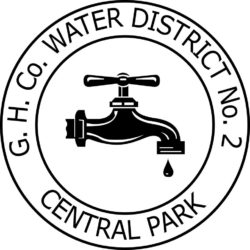Folks who have lived a significant part of their lives in rural areas and small towns are usually well prepared for extreme weather.
However, here in Central Park we have, in recent years, seen quite a few people moving in from more urban environments. So, if some of these suggestions seem to be kind of “doh” moments, remember that some of your newest neighbors may have spent their lives in a city with city services and protections.
1. Do not travel unless absolutely necessary. Balance the importance of your trip against possible property (vehicle) damage or personal injury. Or just the plain inconvenience of having your vehicle stuck in a ditch for hours waiting for help.
2. Before the inclement weather arrives stock up on basic necessities. Most country folks keep emergency supplies on hand at all times. You should be able to survive for a minimum of three days without outside assistance.
Remember that your toilet won’t flush without water and your septic system pump (if you have one) will not work without power. The water problem can be handled by filling the bath tub with water before things get dicey. A sauce pan can be used to ladle water into the toilet tank. If you have a septic system pump, you will need to figure out alternative sanitary provisions.
3. Some items to consider:
Bottled Water
Medicines
Canned Food (your freezer will quit when the power goes out)
Basics, like flour, sugar, baking soda, powdered milk, etc.
Pet Food
Take a few minutes and consider items that are important and have them on hand
4. How will you cook? Do NOT use camping stoves or grills (gas or charcoal) indoors. You can cook on a wood stove. Even a fireplace with a little ingenuity. I have a covered (not enclosed) area with a gas grill and a smoker. We eat mighty fine when the power is out.
Have a couple of big camping coolers on hand. In cold weather you can move the food from your refrigerator into the coolers and keep them outside.
As an aside, I have equipped my home with battery powered carbon monoxide detectors. You should too.
5. How will you stay warm? Do NOT use open flame heaters indoors. This can be your biggest challenge if you don’t have a wood stove. If all your heat sources require public utilities (electricity, natural gas) search out possible heat sources that do not produce carbon monoxide and have something on hand. If you have propane heat (pretty common in our area) make sure your propane tank is topped off.
If you have to go somewhere, make sure your vehicle has a full tank of gas and emergency equipment and supplies. Things like water, warm clothing, snacks, first aid, blankets, hand warmers (really cheap at the local hardware store), flares, etc.
6. Have an emergency radio. Hand cranked radios that tune into the emergency notification radio stations are readily available and inexpensive. The newer ones have USB ports for charging cell phones.
7. Country folks are country folks. If you find yourself struggling, talk to your neighbors.
8. Be mindful of carbon monoxide danger. Do not use open flame devices, that are not vented outdoors, indoors. Make sure any generator exhaust is securely vented outdoors. Monitor fireplaces to make sure they are drawing properly. Make sure furnace vents are free of ice and snow. At your earliest convenience, install battery powered carbon monoxide detectors and test them regularly.
9. Check the Emergency Management section of the County’s web site. There are lots of great suggestions to be found there.
10. Please stay safe. We want Fire District #2 personnel to get bored.
